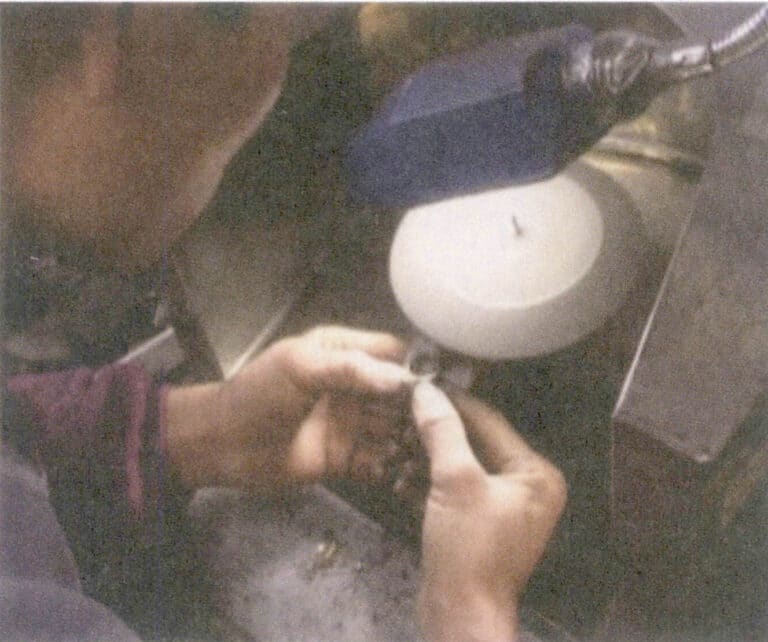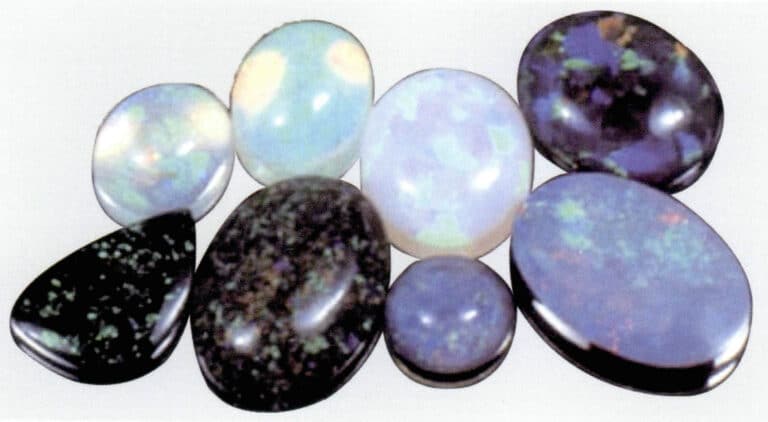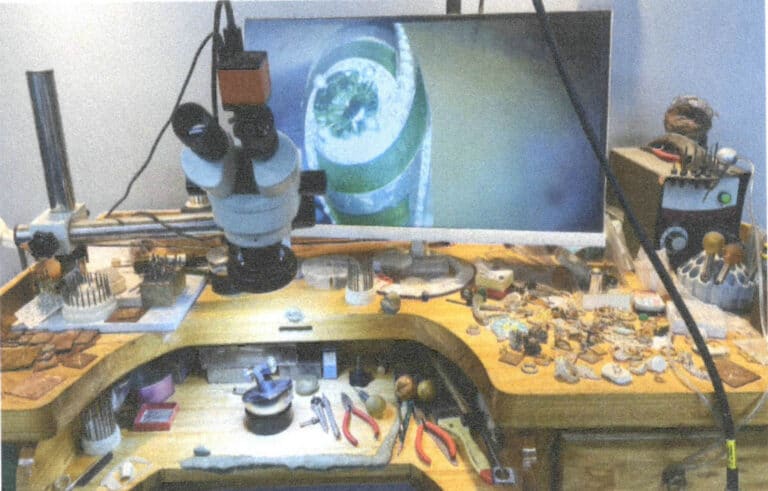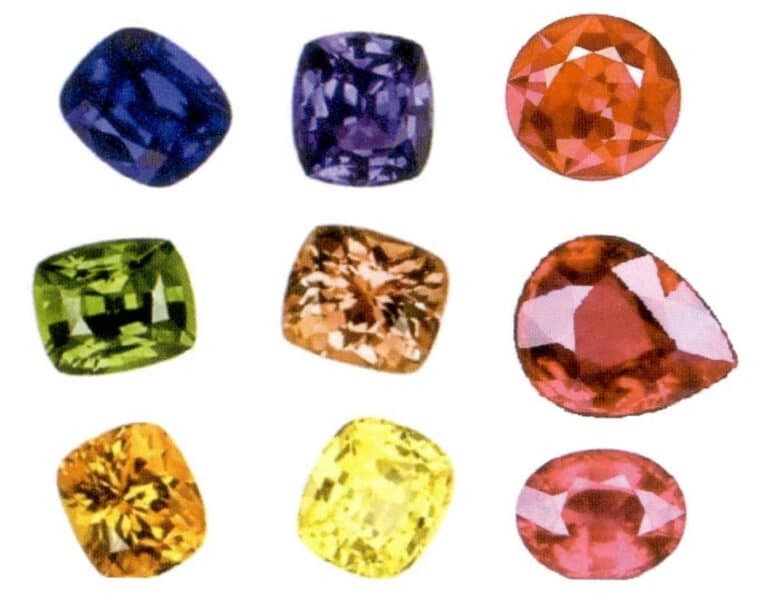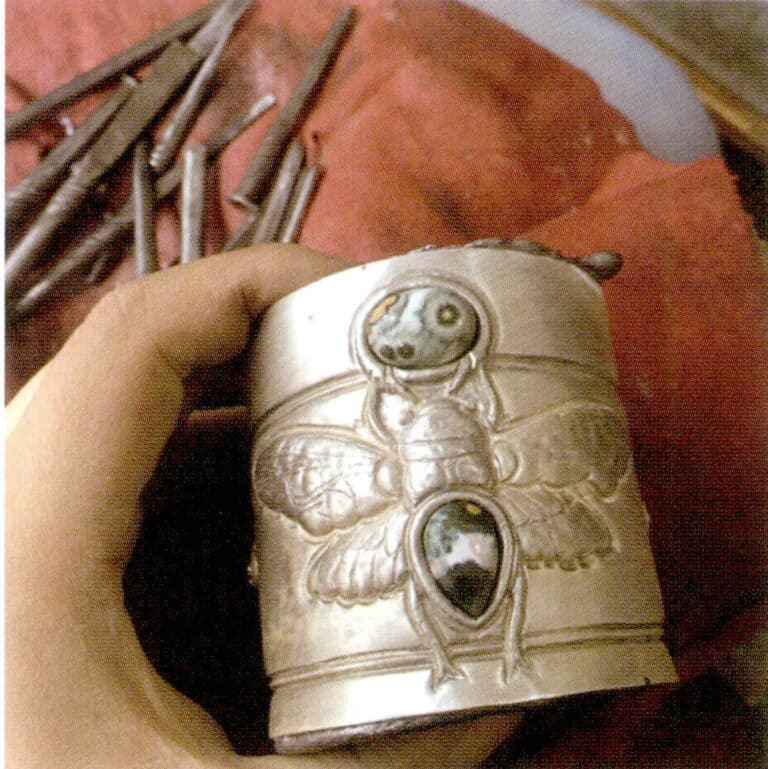Kuinka suunnitella korvakoruja, sormuksia, rintakoruja ja rannekoruja: Askel askeleelta -opas
Practical Jewelry Design: Earrings, Rings, Brooches & Bracelets Creation Guide
Johdanto:
Want to learn jewelry design? This guide covers designing earrings, rings, brooches, and bracelets. It includes material cutting and matching, size specifications, drawing key points, step-by-step drawing instructions, and technique summaries. Perfect for jewelry makers and designers looking to create beautiful pieces.
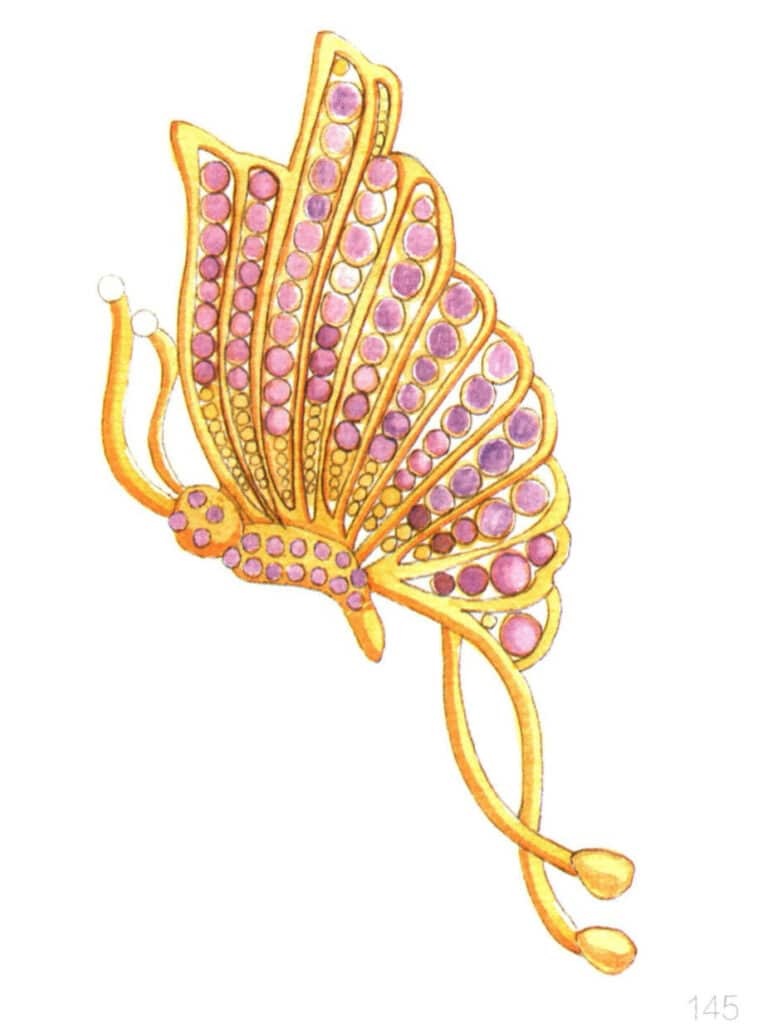
Sisällysluettelo
Section I Earring Design Practicing
1. Materiaalin leikkaaminen ja yhteensovittaminen

2. Size Specifications
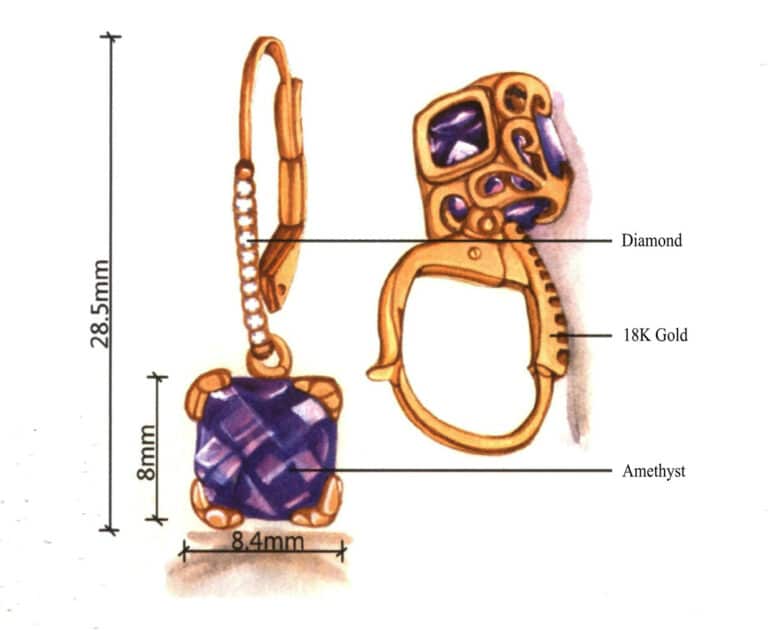
3. Drawing Key Points
(1) The overlay of gem colors should blend, rich but not abrupt.
(2) The metallic texture is expressed through color gradients, reflections, and highlights.
(3) When composing, it is necessary to consider the display characteristics of an earring design, and different angles can be chosen for representation.
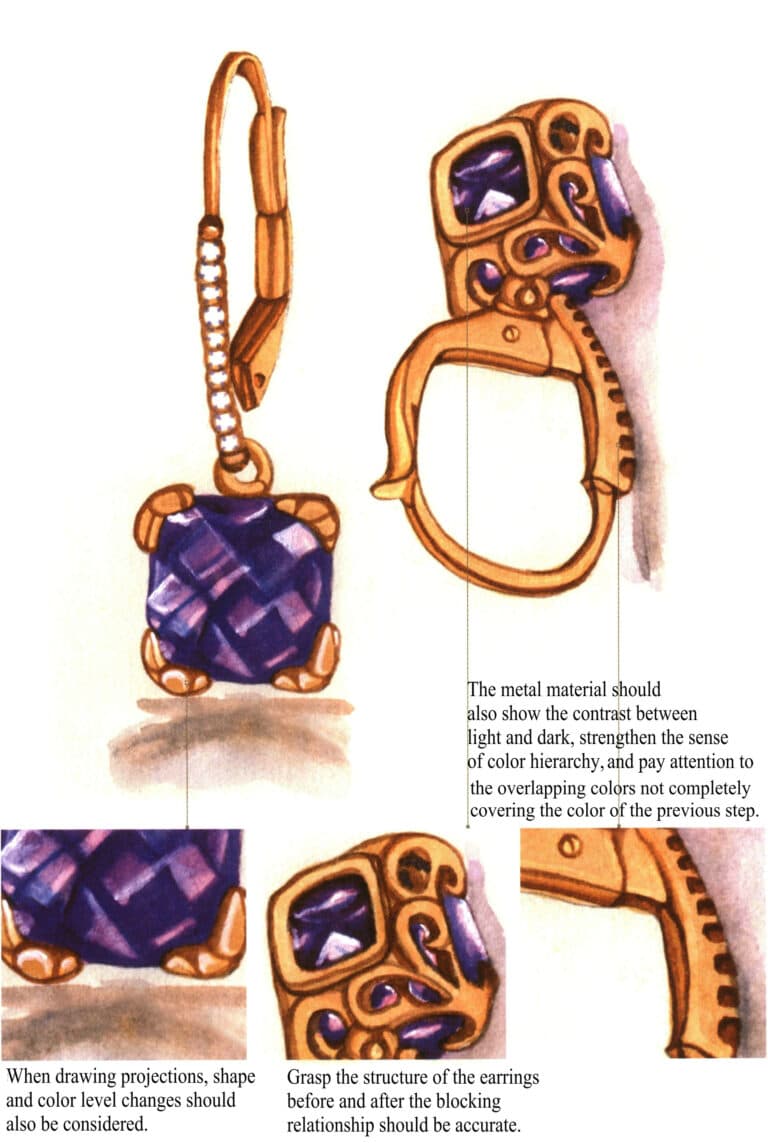
4. Piirtämisen vaiheet

Step 01 Begin with partial sections. Use a pencil to outline the earring’s metal parts based on perspective principles, ensuring clear structural definition and characteristic form.
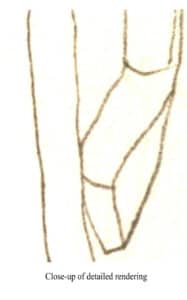
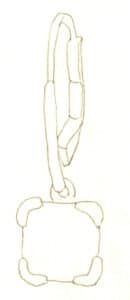
Step 02 Sketch the contour of the earring pendant with loose, natural-flowing lines.
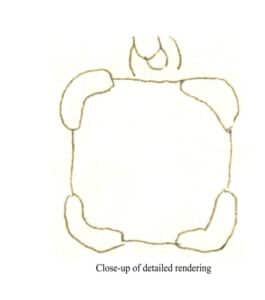
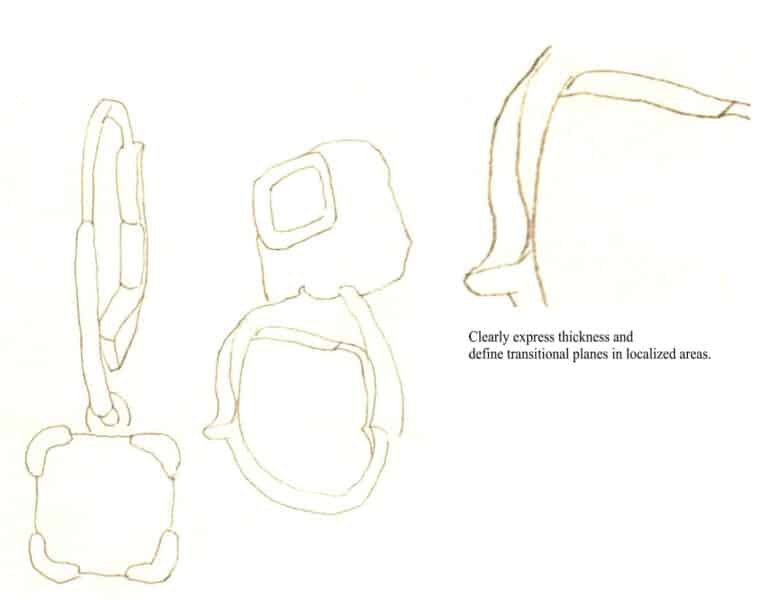
Step 03 Add another earring at a different angle beside the first one to showcase design features from multiple perspectives, enhancing the composition.
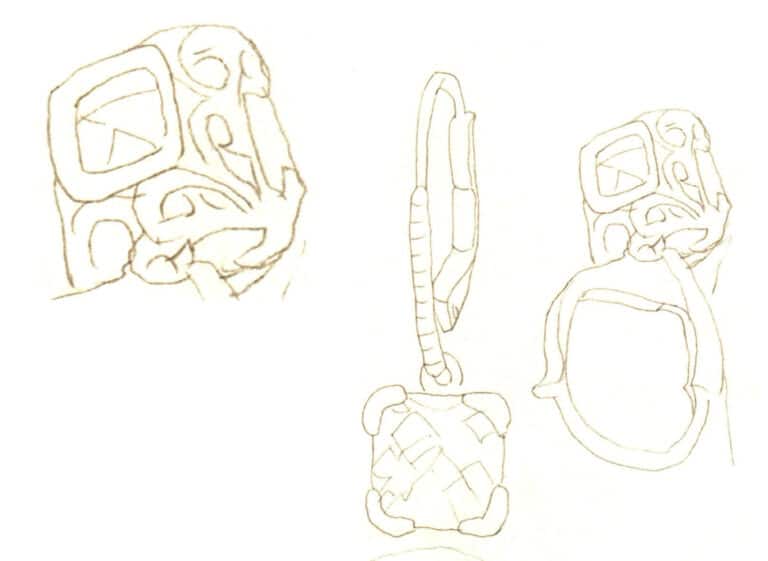
Step 04 Add details, refine line art, polish local shapes, and erase redundant lines to maintain cleanliness.
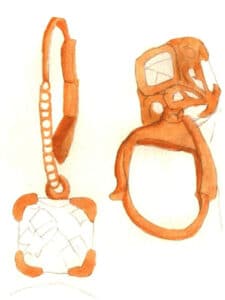
Step 05 Lighten the pencil sketch with a soft eraser to prevent smudging during coloring. Mix yellow ochre and flesh tone to apply a base layer to the metal parts, suggesting basic light-dark relationships.

Step 06 Blend burnt umber and burnt sienna. Use a small watercolor brush to paint metallic shadows, intensifying contrast and three-dimensionality.
Vinkkejä
When applying the base color, you can first brush a layer of water on the areas that need coloring to ensure a natural color transition.
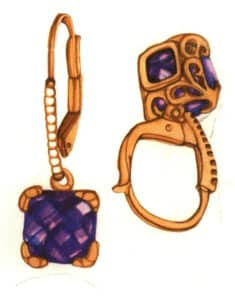
Step 07 Wet the gemstone area. Mix rose madder and violet to apply the amethyst’s base layer. Once slightly dry, add sapphire blue to define shadows and enhance chromatic complexity, emphasizing faceted effects.
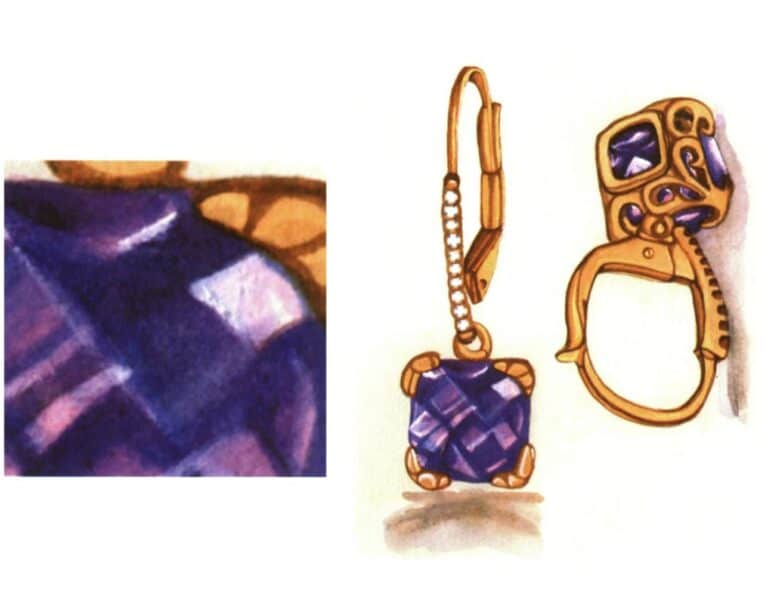
Step 08 Paint the earring’s cast shadow. Highlight reflections and sparkle with white pigment. Adjust and finalize the artwork to complete.
5. Yhteenveto tekniikoista
(1) Miten ilmaistaan jalokivien tilavuus?
The volume of gemstones can be expressed through variations in color depth and highlights, and it is important to depict the facets of the gemstones.
(2) How do you blend and diffuse colors in the painting?
The colors in watercolor are often not painted on but can mix or blend freely on the paper, thus creating a natural color effect. Learning this skill requires a lot of practice and familiarity with the characteristics of your painting tools, such as watercolor brushes, paper, and paints, as well as practicing and mastering moisture control.
(3) How to keep the painting clean?
During the drawing process, you can place a tissue under your hand to prevent sweat from dirtying the painting. Drawing paper is often very easy to get dirty; once it is dirty, it isn’t easy to apply color. Therefore, when painting for a long time, you can place a tissue or wash your hands after painting to solve this problem effectively.
Section II Ring Design Practicing
1. Materiaalin leikkaaminen ja yhteensovittaminen
This ring design mainly uses garnet, ruby, and rose gold. The main part features a red semi-circular garnet with a glass-like luster, while the band is made of metal paired with irregular rubies crafted using inlay techniques. The overall color scheme is passionate, vibrant, and lively.
Since it combines garnet, which symbolizes loyalty, authenticity, friendship, and blessings, with ruby, which symbolizes nobility and love, this ring can be worn as a talisman or given as a gift to elders or loved ones.
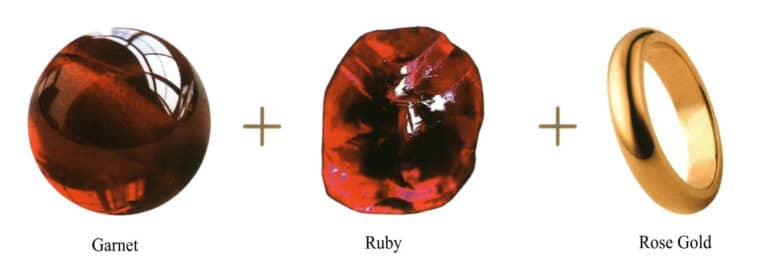
2. Size Specifications
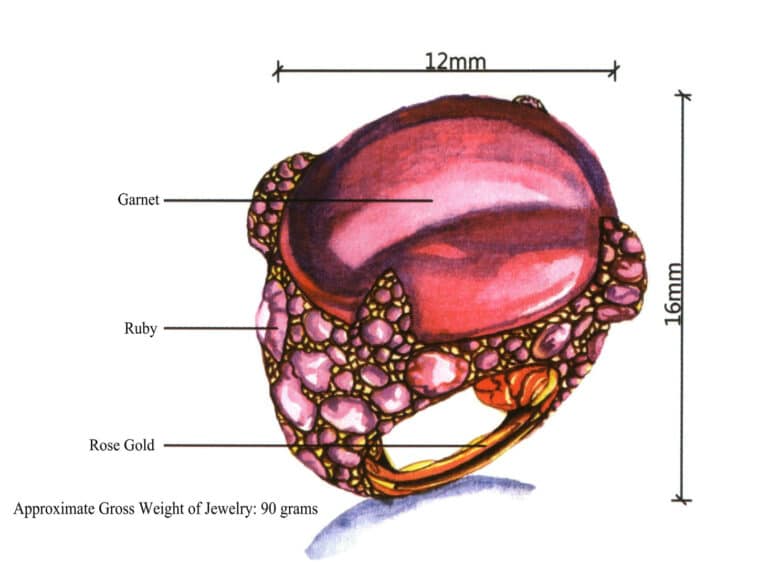
3. Piirustuksen pääkohdat
(1) Pay attention to the representation of the gem’s transparency.
(2) Small gems on the ring should be distinguished.
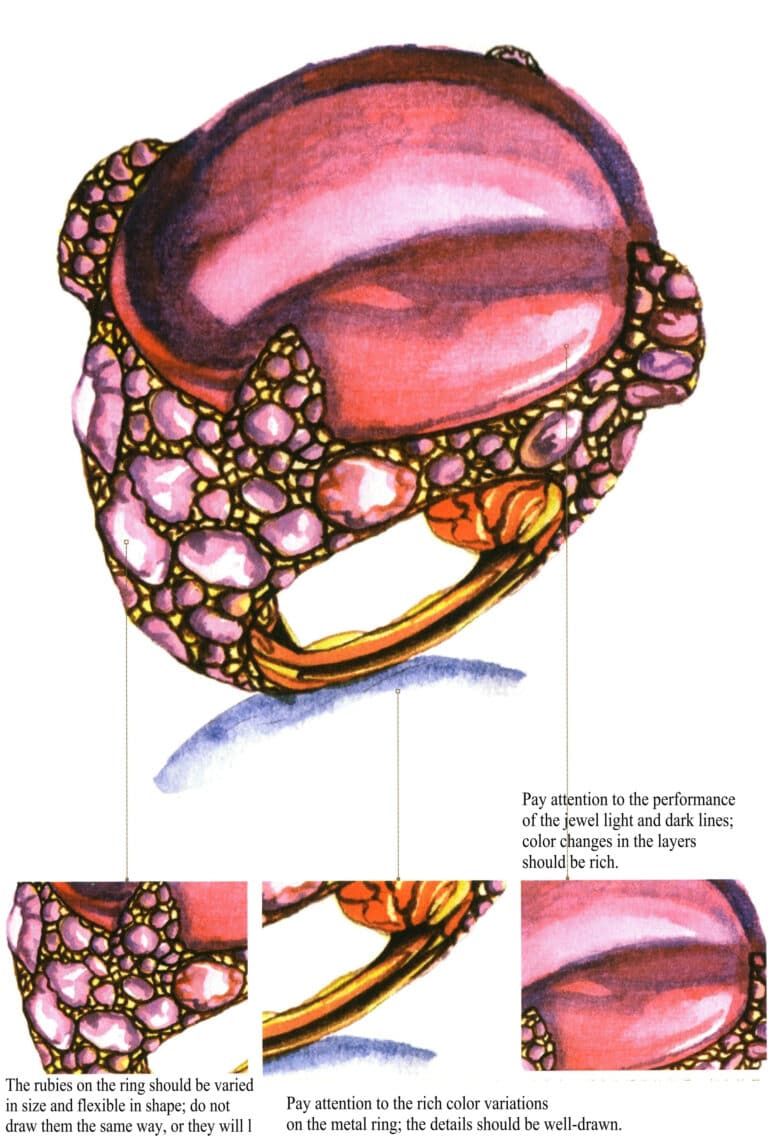
4. Piirtämisen vaiheet
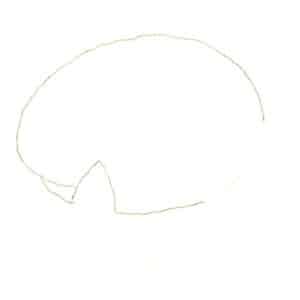
Step 01 Begin with partial sections. Lightly outline the main gemstone’s general contour of the ring with loose, casual lines.
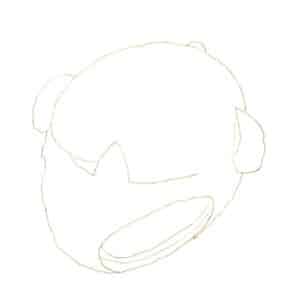
Step 02 Sketch the ring band’s contour with a pencil based on perspective principles, maintaining natural line flow.
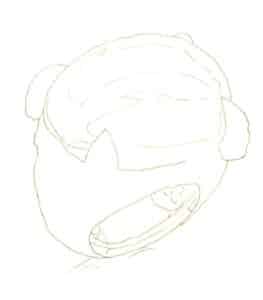
Step 03 Lightly outline internal structures like the gemstone’s light-dark boundary line with a pencil.

Step 04 Add details, refine line art, polish local shapes. Erase redundant lines and soften pencil guidelines with a soft eraser to prevent coloring smudges.

Step 05 Wet the garnet area on the ring’s main section. Mix vermilion with violet to paint the gemstone’s base color, reserving highlight areas.

Step 06 Blend rose madder, cerulean blue, and violet to deepen the gemstone’s shadows, ensuring natural color transitions.
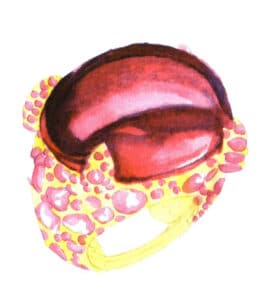
Step 07 Dilute rose madder with water to apply the ruby’s base layer on the ring band. Use lemon yellow for a faint base layer on metal parts, leaving intentional gaps for breathability.
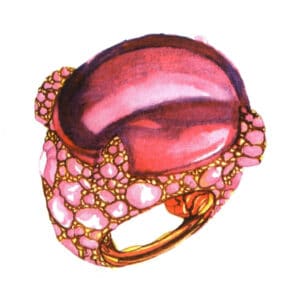
Step 08 Mix burnt umber and vermilion. Use a small watercolor brush to define the ring band’s shadows and refine metal details.
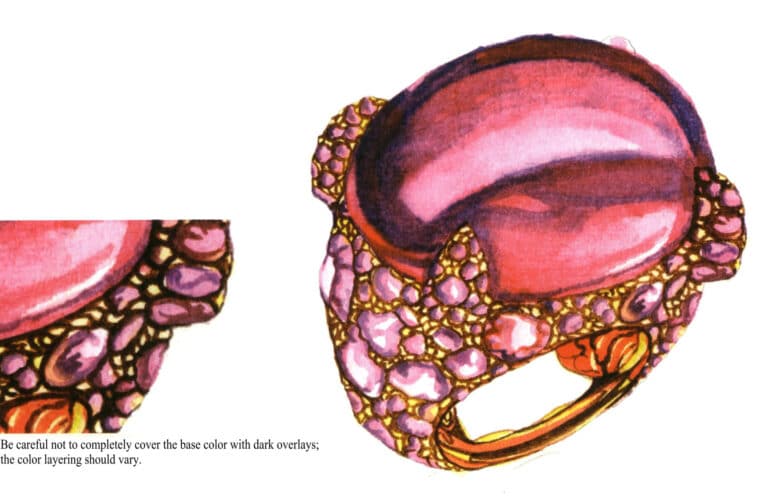
Step 09 Blend rose madder and violet to refine the ruby’s shadows.

Step 10 Deepen metal shadows with raw umber. Paint the ring’s cast shadow with Payne’s grey. Adjust and complete the artwork.
5. Yhteenveto tekniikoista
(1) Miten ilmaistaan jalokivien tilavuus?
When drawing gemstones, the sense of volume is generally expressed through variations in color depth and the depiction of highlights and reflections.
(2) How do we unify the color tone of the picture?
Every picture has its main tonal feeling. This chapter’s design renderings of jade rings are primarily in red and yellow, leaning towards warm tones. Therefore, the colors in the picture should not be too many to avoid chaos or inconsistent tones.
(3) How to accurately grasp the external characteristics of jewelry?
First, observe and analyze the perspective relationships of the jewelry, then determine the local shapes’ design style and characteristics, and finally start from the outer contour and gradually refine the internal structure.
Copywrite @ Sobling.Jewelry - Custom korujen valmistaja, OEM ja ODM korut tehdas
Section III Brooch Design Practicing
The selection of brooches varies due to differences in season, age, personal preference, and economic conditions. Wearing different brooches also represents different meanings; for example, a swan brooch symbolizes purity, loyalty, and nobility.
This chapter mainly introduces the design materials, cutting and matching of butterfly brooches, key drawing points, drawing steps, and a summary of techniques.
1. Materiaalin leikkaaminen ja yhteensovittaminen
This butterfly brooch design mainly uses purple crystals, diamonds, and alloys. The overall shape features a lightweight butterfly element, with gemstones of varying sizes and independent facets adorning the wings, eyes, and abdomen, paired with a delicate, smooth, and fade-resistant alloy. It employs a handmade inlay technique, ensuring solid quality, and the overall design is dazzling and radiant, giving a feeling of luxury, elegance, and romance.
Wearing it can become the most beautiful embellishment, highlighting the subtle beauty of women and reflecting the wearer’s composure and elegance.
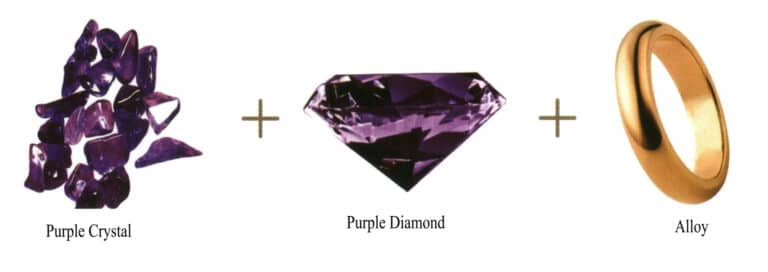
2. Size Specifications

3. Key Points of Drawing
(1) Dark areas are generally depicted using deeper shades of the same color system.
(2) The dark side, bright side, and highlight parts of the gemstone should be distinguished to emphasize the sense of volume.
(3) Due to the light source factors, the butterfly brooch will have variations in color brightness.
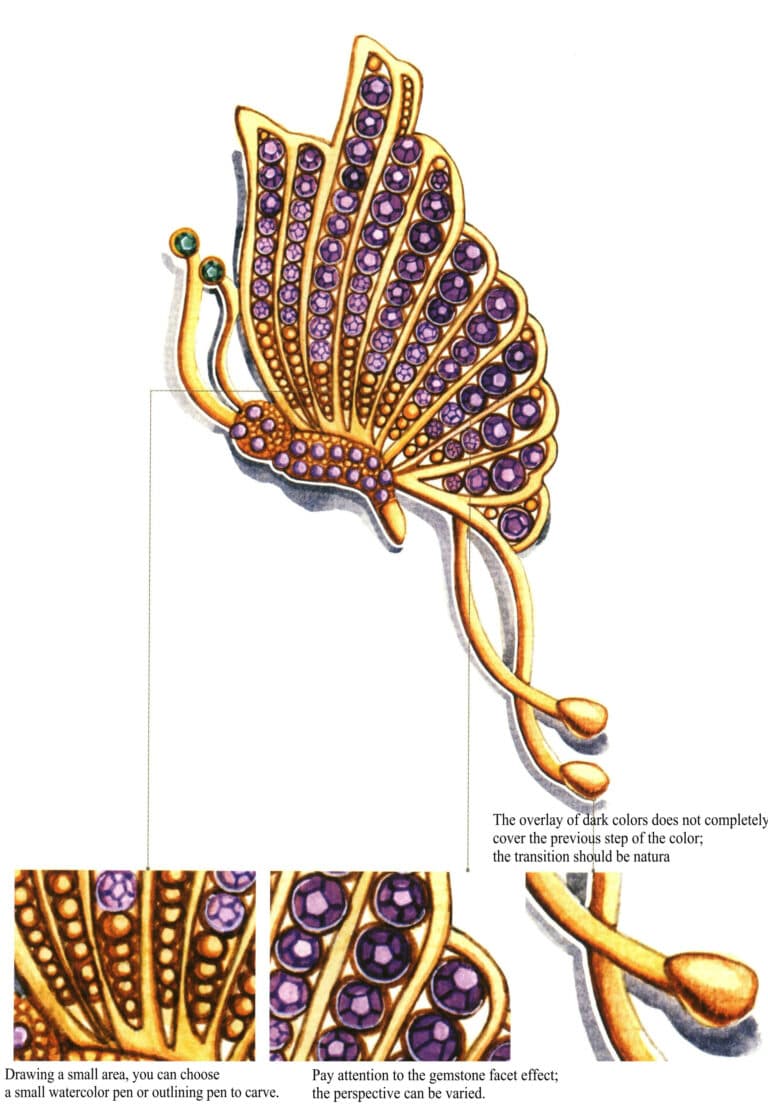
4. Piirtämisen vaiheet
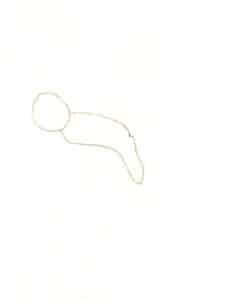
Step 01 Begin with partial sections. Lightly sketch the butterfly brooch’s head and abdomen contours with loose, casual lines as reference.

Step 02 Based on overall proportions, outline the brooch’s antennae and tail with natural, flowing pencil lines.
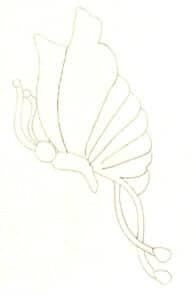
Step 03 Draw the wings’ outer contour with relaxed curved lines.

Step 04 Define the wings’ internal structures with a pencil.

Step 05 Mark gemstone positions and shapes using simplified circles. Adjust local shapes and erase redundant lines for cleanliness.

Step 06 Coat the metal parts with water. Use a medium watercolor brush to apply the first wash with yellow ochre diluted in ample water.
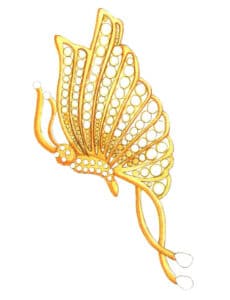
Step 07 Paint metallic shadows with burnt umber, keeping coverage minimal.
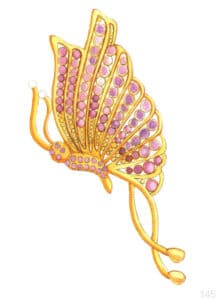
Vaihe 08 Sekoita ruusunpunaista ja violettia värillisten timanttien ensimmäiseen kerrokseen pitämällä värit vaaleina.
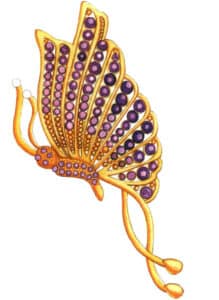
Step 09 Reinforce colored diamonds with saturated rose madder and violet mixtures for deeper tones.
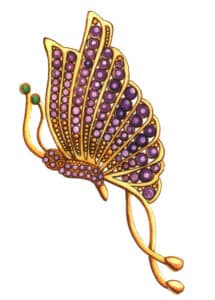
Step 10 Apply emerald green to antennae gemstones. Deepen metal shadows with burnt umber, enhancing color depth.
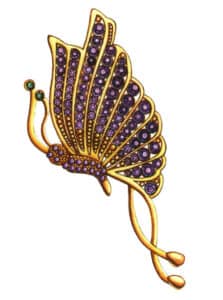
Step 11 Refine antennae gemstones with emerald green and Payne’s grey. Detail wing gemstones with violet and sapphire blue. Highlight with white.
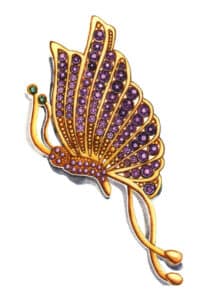
Step 12 Paint the brooch’s cast shadow with Payne’s grey. Adjust and finalize the artwork to complete.
5. Yhteenveto tekniikoista
(1) How can the sense of volume in metal parts be expressed?
Due to the smooth surface of the metal material, which has good reflective properties, the sense of volume is mainly expressed through the layering of dark colors and the embellishment of reflective areas.
(2) How do you handle the details of the picture well?
The gemstones on the butterfly brooch should be arranged in an orderly manner, and the contrast of light and dark can express the details of the material, highlighting the luster and texture of the crystal and diamond.
Section IV Bracelet Design Practicing
1. Materiaalin leikkaaminen ja yhteensovittaminen
The processing of handmade beads mainly includes four processes: material selection, shaping, grinding, and polishing. Due to the complexity and difficulty of the processing steps, the yield of perfect bead products is generally very low.
This bracelet design mainly uses crystal-clear, fresh and refined, warm and delicate pink quartz, paired with metal materials to highlight the bracelet’s elegance and restraint, giving a warm and sweet feeling like jade, with a soft pink and watery appearance. Wearing it on the wrist looks very elegant and radiant; not only can it highlight the wearer’s temperament well, but it can also ease tension. In addition, it can promote harmony in interpersonal relationships and enhance attraction to the opposite sex. However, the pink quartz bracelet should be worn on the left hand to exert its best spiritual effect.
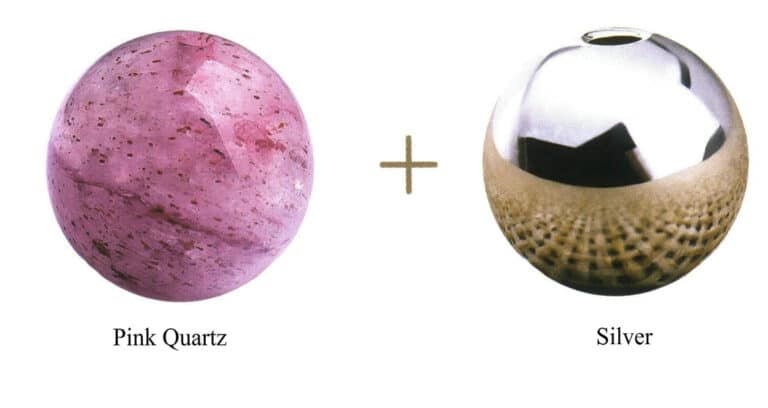
2. Kokomäärittely
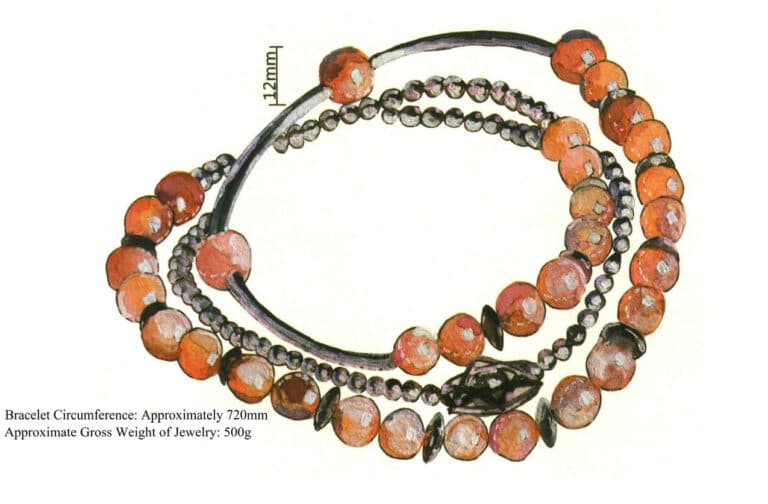
3. key Points of Drawing
(1) The bracelet is in a circular stacked state, and when drawing, it is important to grasp the sense of layering between the upper and lower parts.
(2) When drawing metal beads, it is necessary to express the ambient color and the texture of strong reflections, enhancing the sense of space in the picture through the reflective parts of the chain.
(3) The direction of the light source in the overall picture needs to be unified, and attention should be paid to the distribution of highlight positions.

4. Piirtämisen vaiheet
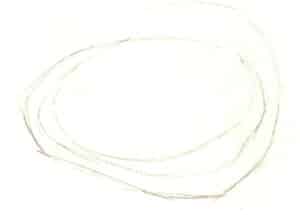
Step 01 Sketch the bracelet’s general contour with light, casual pencil lines, avoiding heavy pressure.

Step 02 Outline the large beads to define the bracelet’s basic shape.
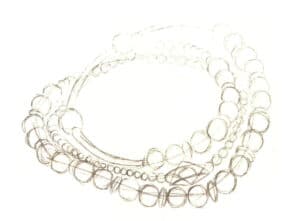
Step 03 Draw remaining structures (small beads, gemstones) with smooth lines.
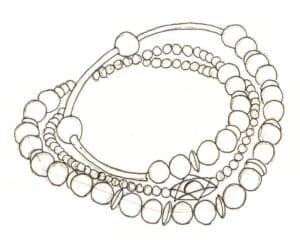
Step 04 Precisely outline the bracelet’s contours with a 0.2mm technical pen over the pencil draft.
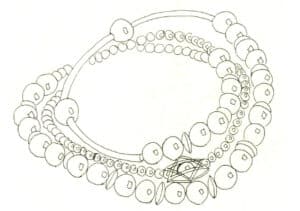
Step 05 Add pendant textures and details. Erase pencil marks thoroughly with a soft eraser.

Step 06 Apply a base layer to large round gemstones using vermilion, lemon yellow, and magenta, reserving whites for highlights.
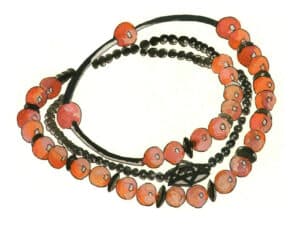
Step 07 Paint the metal parts with Payne’s grey and ivory black, leaving gaps for breathability.

Step 08 Deepen metallic shadows with Payne’s grey mixtures.
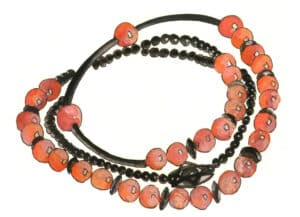
Step 09 Blend lemon yellow and rose madder to intensify shadows on pink gemstones, enhancing contrast and volume.

Step 10 Darken shadows on metal beads with Payne’s grey and ivory black.
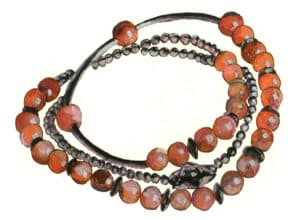
Step 11 Deepen colors using burnt umber, burnt sienna, lemon yellow, and rose madder. Accent highlights on pink gemstones and metal beads with white.
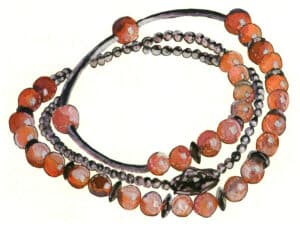
Step 12 Refine gemstones with yellow ochre, rose madder, and orange to amplify three-dimensionality. Adjust and finalize the artwork to complete.
5. Technique Summary
(1) How do we express the sense of volume of crystal beads?
The sense of volume of pink crystal beads can be expressed through variations in color depth, as well as highlights and reflections.
(2) Miten metallimateriaalien värit sovitetaan yhteen?
Metallimateriaalien piirtäminen edellyttää heijastavien värien asianmukaista lisäämistä hienosäätöä varten, jotta metallin heijastusominaisuudet tulevat esiin.
(3) How to unify the color tone of the picture?
Every picture has its main tonal feeling, such as warm tones, cool tones, etc. The size of the color blocks can determine the main tone, and care should be taken not to use too many colors in the picture to avoid making it chaotic or inconsistent.





